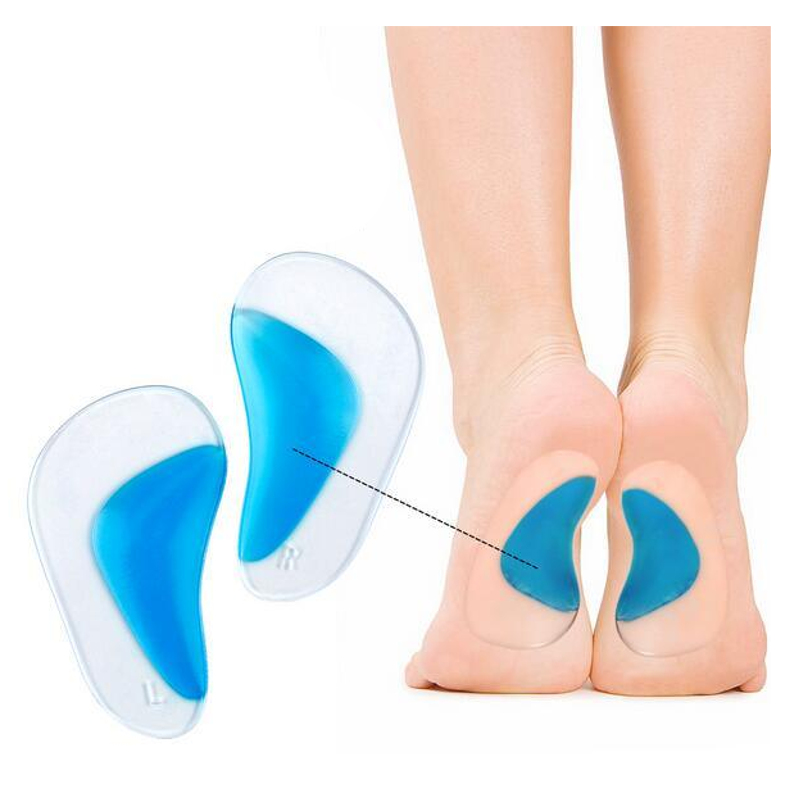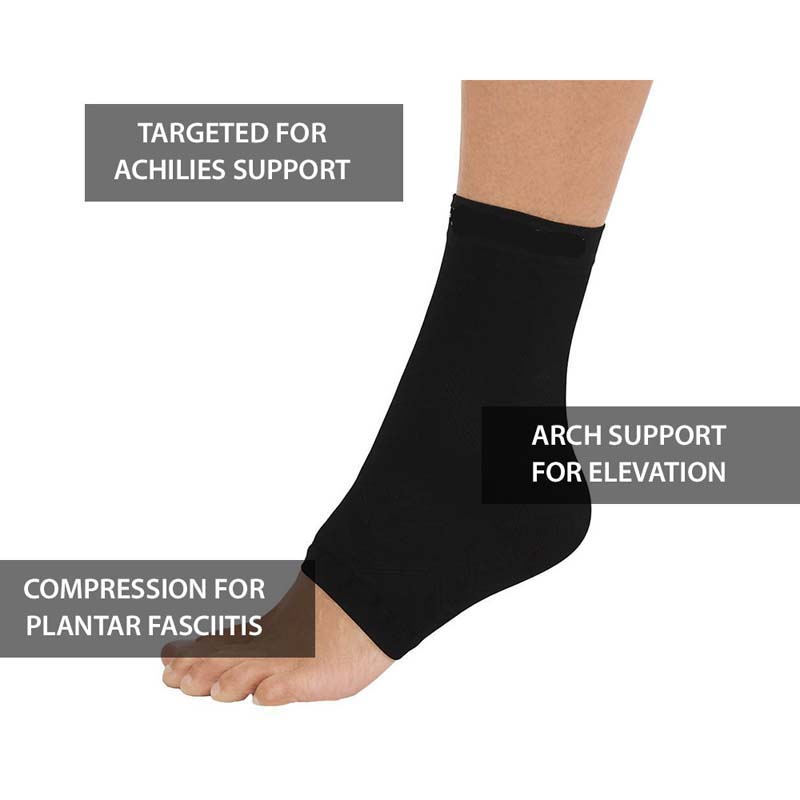The Importance of Rest in Plantar Fasciitis Recovery

Featured Products for Plantar Fasciitis Foot Pain Relief
Plantar fasciitis, a common cause of heel pain, can significantly impact your daily activities. While various treatments exist to manage the condition, one key component of an effective recovery plan is often overlooked: rest. In this blog post, well explore the crucial role that rest plays in plantar fasciitis recovery and provide insights into how proper rest can contribute to a speedier and more successful healing process.
Understanding Plantar Fasciitis:
-
Nature of the Condition:
- Plantar fasciitis is characterized by inflammation of the plantar fascia, a thick band of tissue that connects the heel to the toes. This inflammation often leads to heel pain, particularly with the first steps in the morning or after periods of inactivity.
-
Causes and Contributing Factors:
- Common causes of plantar fasciitis include excessive strain on the feet, improper footwear, high-impact activities, and biomechanical issues. The condition is often exacerbated by overuse, repetitive stress, and inadequate rest.
The Role of Rest in Plantar Fasciitis Recovery:
-
Reducing Microtrauma:
- Rest is crucial in reducing microtrauma to the plantar fascia. When you engage in activities without allowing adequate recovery time, microtears in the fascia can accumulate, leading to inflammation and persistent pain.
-
Minimizing Inflammation:
- Rest helps minimize inflammation in the affected area. When youre active, the plantar fascia is repeatedly stressed, leading to increased blood flow and inflammation. Allowing time for rest enables the body to address inflammation and promote healing.
-
Preventing Overuse:
- Overuse is a common factor in the development of plantar fasciitis. Continuous strain on the plantar fascia, without sufficient rest, can impede the bodys ability to repair and regenerate the damaged tissue.
-
Facilitating Healing:
- Rest plays a pivotal role in facilitating the healing process. During periods of rest, the body can redirect resources to repair the microtears in the plantar fascia, promoting tissue regeneration and overall recovery.
Practical Tips for Incorporating Rest:
-
Modify Activity Levels:
- Temporarily modify or reduce high-impact activities that contribute to plantar fasciitis symptoms. Consider alternative exercises that are gentler on the feet, such as swimming or cycling.
-
Ice Therapy:
- Use ice therapy during periods of rest to help manage inflammation. Applying an ice pack to the affected heel can provide relief and support the healing process.
-
Elevate Your Feet:
- Elevate your feet when resting to promote better blood circulation and reduce swelling. This is particularly beneficial after engaging in activities that may exacerbate plantar fasciitis symptoms.
-
Night Splints:
- Consider using night splints, especially during sleep. Night splints help maintain the foot in a dorsiflexed position, preventing the plantar fascia from tightening excessively overnight.
-
Gentle Stretching:
- Incorporate gentle stretching exercises into your daily routine. Focus on stretches that target the calves, Achilles tendon, and the plantar fascia itself. These stretches can help maintain flexibility and reduce tension.
-
Supportive Footwear:
- Wear supportive footwear with proper arch support during periods of rest. This ensures that your feet receive adequate support, contributing to a more comfortable and conducive environment for recovery.
-
Listen to Your Body:
- Pay attention to your bodys signals and avoid pushing through pain. If activities or movements exacerbate your plantar fasciitis symptoms, modify or discontinue them to prevent further strain.
The Balancing Act:
-
Gradual Return to Activity:
- As symptoms improve, gradually reintroduce activities into your routine. However, ensure that the return is gradual and mindful, allowing your body to adapt and minimizing the risk of recurrence.
-
Consult with Healthcare Professionals:
- Consult with healthcare professionals, such as podiatrists or physical therapists, for personalized guidance on the appropriate balance between rest and activity. They can provide tailored recommendations based on the severity of your condition and individual needs.
Conclusion:
Rest is a cornerstone of plantar fasciitis recovery. By prioritizing adequate rest, you provide your body with the time and conditions it needs to heal and repair the damaged plantar fascia. Remember that a comprehensive approach, including rest, proper footwear, stretching, and professional guidance, is key to a successful recovery journey. Be patient with the process, listen to your body, and work collaboratively with healthcare professionals to ensure a well-rounded and effective recovery plan.
Featured Products for Plantar Fasciitis Foot Pain Relief
Latest Blogs
- Taking a Stand Against Heel Pain: Practical Solutions
- Happy Heels, Happy Life: Banishing Foot Pain for Good
- The Road to Relief: Strategies for Combating Heel Pain
- Heel to Toe Wellness: Tackling Foot Pain Head-On
- Foot Pain Decoded: Understanding the Signals Your Feet Send
- Soothing Steps: Natural Remedies for Heel and Foot Pain
- Putting Your Best Foot Forward: Managing Heel Discomfort
- The ABCs of Happy Feet: Beating Heel and Foot Pain
- From Heel to Toe: Navigating Common Foot Pain Issues
- Taking a Step Back: Causes and Remedies for Heel Pain
- Footloose and Pain-Free: Tips for Happy Heels and Feet
- Soleful Solutions: A Guide to Alleviating Heel and Foot Discomfort
- Stepping Into Comfort: Understanding Heel and Foot Pain
- From Pain to Progress: Inspiring Plantar Fasciitis Journeys
- Living a Full Life with Plantar Fasciitis: Success Stories
- Plantar Fasciitis and Exercise: Finding the Right Balance
- The Impact of Stress on Plantar Fasciitis Symptoms
- Plantar Fasciitis: When to Seek Professional Help
- Inflammatory Foods and Plantar Fasciitis: What to Avoid
- Ergonomics and Plantar Fasciitis: A Comprehensive Guide
- The Importance of Rest in Plantar Fasciitis Recovery
- Traveling with Plantar Fasciitis: Tips for Happy Feet
- Plantar Fasciitis and Your Sleep: Improving Rest Quality
- The Psychological Aspect of Living with Plantar Fasciitis
- Plantar Fasciitis and High-Impact Activities: Navigating Risks
- How to Stay Active with Plantar Fasciitis: Practical Tips
- Plantar Fasciitis and Aging: Strategies for Seniors
- Cryotherapy for Plantar Fasciitis: Icy Relief for Your Feet
- Aquatic Exercise for Plantar Fasciitis: Dive into Healing
- Mindfulness and Meditation for Plantar Fasciitis Relief
- Heel Pain 101: A Guide to Plantar Fasciitis
- Finding Relief - Plantar Fasciitis Home Remedies
- The Emotional Toll of Chronic Plantar Fasciitis
- Post-Workout Foot Care for Plantar Fasciitis Sufferers
- DIY Foot Massage Techniques for Plantar Fasciitis
- From Diagnosis to Recoveryc- Navigating Plantar Fasciitis
- Plantar Fasciitis in Children Signs and Solutions
- Plantar Fasciitis and Weight: Impact on Foot Health
- How Nutrition Affects Plantar Fasciitis Recovery
- Yoga for Plantar Fasciitis: Poses for Pain Relief
- Breaking Down Plantar Fasciitis Myths and Misconceptions
- Plantar Fasciitis Stretches - Daily Routine for Relief
- The Link Between Plantar Fasciitis and Flat Feet
- Plantar Fasciitis in Pregnancy - What to Expect
- Desk Job Dilemma - Coping with Plantar Fasciitis at Work
- Plantar Fasciitis in Athletes Strategies for Recovery
- Massage and Plantar Fasciitis A Soothing Combination
- Plantar Fasciitis at Night: Tips for Better Sleep
- Plantar Fasciitis vs Heel Spurs - Understanding the Difference
- The Role of Stretching in Plantar Fasciitis Recovery
- Running with Plantar Fasciitis: Dos and Donts
- Preventing Plantar Fasciitis: Tips for Foot Health
- Natural Remedies for Plantar Fasciitis You Havent Tried
- Heel Pain Demystified: Plantar Fasciitis Explained
- Best Shoes for Plantar Fasciitis: A Comprehensive Guide
- Managing Plantar Fasciitis Pain: Tips and Tricks
- The Complete Guide to Plantar Fasciitis Treatment Options
- 10 Effective Exercises for Plantar Fasciitis Relief at Home
- Understanding Plantar Fasciitis: Causes and Symptoms
- Why do I get Pain in My Feet at Night
- Is pain in your feet a sign of diabetes
- What causes pain in my feet
- Plantar Fasciitis - Why so Painful
- What is that pain in my heel
- Should I Walk with Foot Pain
- How to Treat Ankle Pain
- 10 Best Exercises of Plantar Fasciitis
- Do Compression Socks Help Foot Pain
- Do Insoles Work for Foot Pain
- Best Stretches for Plantar Fasciitis
- 5 Causes of Plantar Fasciitis
- Do Back Posture Braces Actually Work
- Foot pain from walking
- Best Insoles for Plantar Fasciitis
- Pain in heel of foot after Running
- Treatment for Pain in arch of foot
- Pain on top of foot
- Mortons neuroma treatment
- How to remove an Ingrown Toenail
- Foot Heel Spur Pain
- Sore Foot in the Morning
- Suffer Heel Pain in the Morning ?
- Start a running routine
- Running through Fatigue
- Best Achilles Tendonitis and Ankle Excercises
- Causes of Achilles Tendonitis and Ankle Pain
- Plantar Fasciitis Cure and Treatment
- Best Plantar Fasciitis Products
- Causes of Plantar Fasciitis and Heel Spur Pain
- Best Plantar Fasciitis Excercises



















